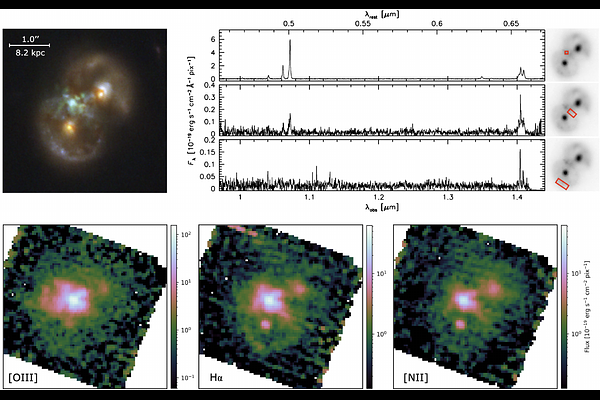Further Evidence for a Direct-Collapse Origin of the Supermassive Black Hole at the Center of the Infinity Galaxy

Further Evidence for a Direct-Collapse Origin of the Supermassive Black Hole at the Center of the Infinity Galaxy
Pieter van Dokkum, Gabriel Brammer, Connor Jennings, Imad Pasha, Josephine F. W. Baggen
AbstractThe z=1.14 $\infty$ galaxy consists of two ringed nuclei with an active supermassive black hole (SMBH) in between them. The system is likely the result of a nearly face-on collision between two disk galaxies with massive bulges. In van Dokkum et al. (2025) we suggested that the SMBH may have formed from shocked and compressed gas at the collision site, in a runaway gravitational collapse. Here we test this hypothesis using newly obtained NIRSpec IFU observations. We first confirm that the system has a cloud of gas in between the nuclei that is photo-ionized by an AGN-like object near its center. Next, we constrain the origin of the SMBH from its radial velocity. If it formed in the cloud its velocity should be similar to the surrounding gas, whereas it would be offset if the SMBH had escaped from one of the nuclei or were associated with a faint galaxy. We find that the radial velocity of the SMBH is within $\sim 50$ km/s of that of the surrounding gas, as expected if the SMBH formed within the cloud. Unexpectedly, we find that both nuclei have active SMBHs as well, as inferred from very broad H$\alpha$ emission with FWHM $\sim 3000$ km/s. This rules out scenarios where the central SMBH was ejected from one of the nuclei in a gravitational recoil. Taken together, these results strengthen the hypothesis that the object at the center of the $\infty$ galaxy is a newly formed SMBH.